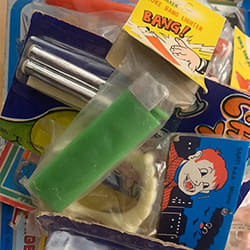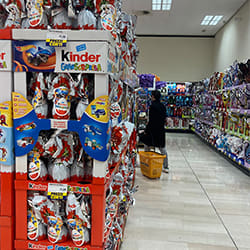
It’s vaguely pentagonal in shape, with four or five round protrusions on the surface that bake to an appetizing golden brown. But the bread is so light that when you break it open you’re left with nothing but empty space. The round shape of michetta makes you want to wrap it up in both your hands, and when I first moved to Milan I felt like michetta was an example of the fashion-loving Milanese getting obsessed over design and how things look without backing it up with any substance. But the truth is that michetta is a traditional type of bread that was developed to resist molding during Milan’s humid winters. It’s actually rare to see it in bakeries these days, since it’s difficult to produce and doesn’t turn a profit.
I love michetta, but being a professional musician, my favorite bread of all the different types around Italy is one they make in Sardinia. Sardinian bread is really unique. It’s a flatbread that’s so thin and crisp that it readily crumbles in your hand. They call it pane carasau, a phrase that comes from the word “to toast” in the Sardinian dialect.

The Sardinian dialect is full of interesting expressions, and they all end in u. It also has tons of people, places, and things whose names have double consonants pronounced with a kind of skipping sound. When Italians make fun of Sardinian speakers, they typically mimic them by making fun of these two characteristics.
For example, there’s a variation of pane carasau topped with a poached egg that is known as frattau. When the flatbread is brushed with olive oil and toasted in the oven, they call it guttiau. Incidentally, one of the few people I work with who is originally from Sardinia has the surname Trullu.
So, being a musician, there’s another reason I’m a fan of pane carasau besides the taste: it also goes by the name “sheet music bread.” They say it got the name either because it’s as thin as sheet music, or because when you crumble or bite into it, it makes a crumpling noise like paper.
Unfortunately it didn’t get the name because people could actually write music on it instead of paper. The real story is that the flatbread came about because in the old days, Sardinian men would be working out in the pastures for long stretches of time, so they needed a way to easily pack bread that would last and could easily be carried on horseback as they moved the herds.
But pane carasau is so thin that it’s hard to imagine them being able to carry it for long without it breaking apart. Even when they package it or it comes from a factory in a box, it rarely arrives unbroken. The Japanese market, which insists on perfection, would never tolerate a product like that—so if you ever come to Italy, it’s best to adopt a “when in Rome…” attitude and enjoy the differences and imperfections without resisting them.
Oh, and how do you eat pane carasau? Well, it’s so delicious that it’s addictive just crunching it plain, but you can also put toppings on it or between it, dip it in soup, fluff it up a bit by dipping it briefly in hot water… it’s the magical sheet music bread that does whatever you want and goes with anything!
Go ahead and try it for yourself!




























































